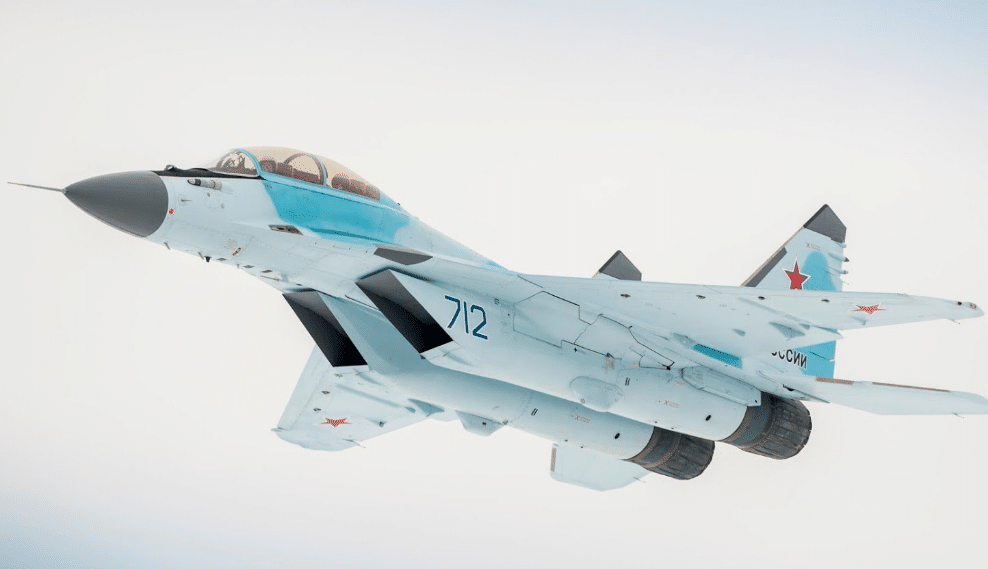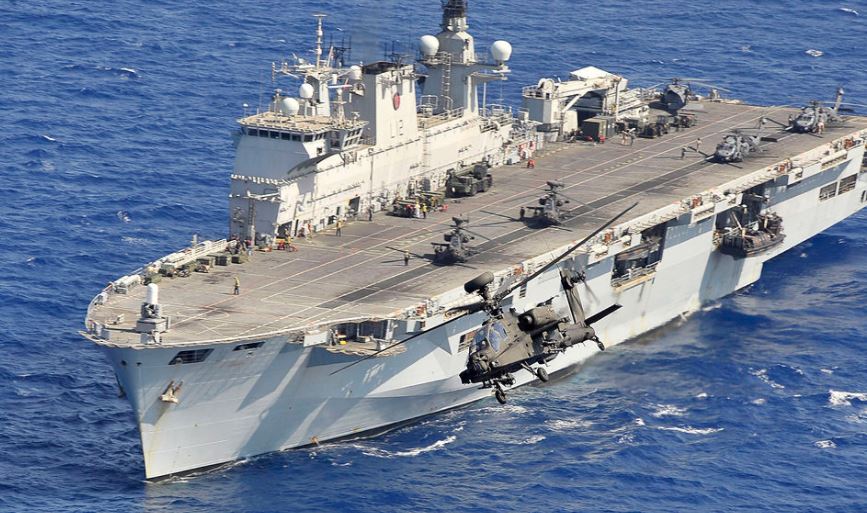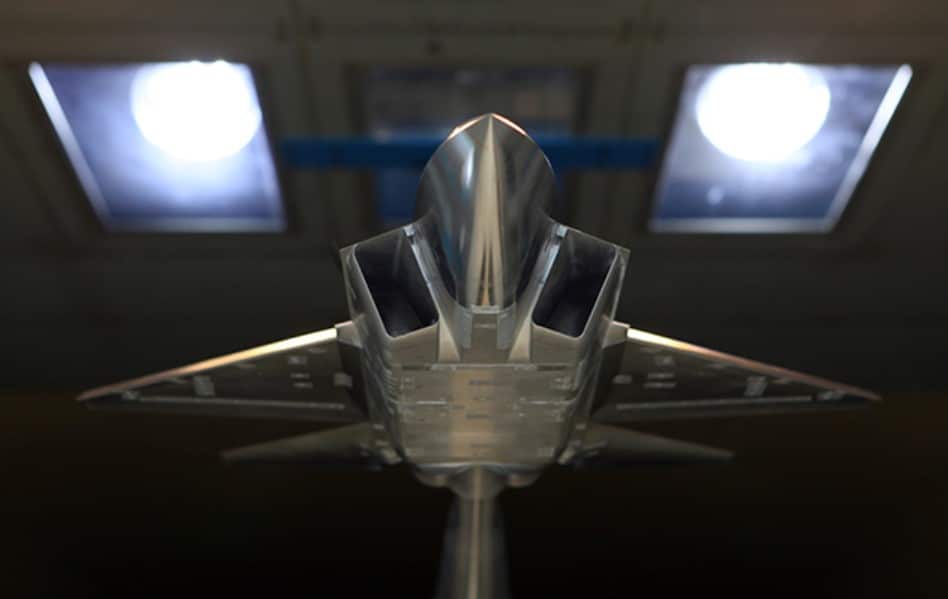2677Views 25Comments

Malaysia reportedly mulling lightweight fighter options
IHS Jane’s Defence Weekly reports that the Royal Malaysian Air Force (RMAF) is mulling lightweight multi-role fighter options to complement its fleet of twin-engine medium and heavyweight fighters, i.e. the F/A-18D and Su-30MKM, respectively.
“The [RMAF] is looking at its capabilities for the next 15-years-or-so, and how best we can suit our requirements,” IHS Jane’s quoted a Malaysian official, who added, “As part of our future capability plans we are looking at a new [LCA] that will have some air-to-air and a full air-to-ground capability.”
Notes & Comments:
Earlier in 2017, the RMAF sought bids for an active requirement of 18 next-generation multi-role fighters to supplant its aging MiG-29s. Saab, BAE Systems and Dassault pitched the Gripen, Typhoon and Rafale, respectively, but fiscal constraints prompted Kuala Lumpur to shelve the program.
Although the Korea Aerospace Industries (KAI) FA-50 Golden Eagle, which has been inducted in Thailand and Indonesia, could be a plausibly strong option, Malaysia might also look at its Eastern options. Kuala Lumpur maintains a diverse armament supplier pool, which is evident in its use of Russian jets along with F/A-18 and order of Chinese Littoral Mission Ships to join its French Gowind-based Littoral Combat Ships.
The RMAF releasing a bid for lightweight fighters could draw Russia and China with the MiG-35 and J-10 as well as JF-17, respectively. United Aircraft Corporation (UAC) is positioning the MiG-35 as an affordable high-tech solution, and Malaysia is among UAC’s prospective markets. Besides meeting the light fighter requirement, UAC could aim to have the RMAF supplant its MiG-29 with the MiG-35.
Pakistan Aeronautical Complex (PAC) had been hopeful of securing a JF-17 sale in Malaysia, but in 2015, Malaysian officials rejected the notion that the RMAF was interested in the platform. However, it is worth noting that the JF-17 could be the lowest cost option for a lightweight fighter, one that could also leverage a diverse catalogue of Chinese guided air-to-surface munitions, including several stand-off range weapons such as the YJ-6 sub-munition dispenser glide-bomb and C-802A anti-ship missile (AShM). Moreover, the RMAF could recycle its experience and infrastructure for the RD-33 to support the RD-93 turbofan engine.
Saab could also position the JAS-39C/D Gripen, which could fit with the RMAF’s lightweight fighter need while also provide a long-term bridge to replacing the MiG-29. Of the available Western options, the Gripen would possess the lowest acquisition and life-cycle costs. Saab can also leverage its RBS-15-series of AShM (the RBS-15Mk3 can double as a land-attack cruise missile) while also presenting the RMAF with many certified and tested air-to-air and air-to-surface munitions from industry leaders, such as MBDA and Raytheon, among others.



25 Comments
by bill
Pak shall be more success with JF17 selling efforts once it’s block 3 version comes out.
by U
Well a bit off topic, but I would like to know why is it that Jordan is buying second hand Dutch F16s when it has previously sold and even now is trying to sell its own F16s to PAF?
http://www.airforcesmonthly.com/2017/10/27/ex-rnlaf-f-16s-delivered-to-jordan/
Is Jordan acting as some kind of a front man for PAF? Lol
by Augustine
Very true. PAF and PAC should start worldwide marketing of JF-17 Block III now all over internet with 3D videos and that prototype we saw at the China air show can be displayed in all major air shows 2018-2019….take a bank loan if you have to. SAAB started marketing Gripen NG since 2012 and got buyer customer by 2013 even though the jet will not be ready to fly until 2018. Smart Swedish ‘Volvo style’ business tactics. PAC is too slow, if it’s not careful, JF-17 III will be too late on arrival like IAF Tejas jet, because by the time PAC wakes up, Gripen NG, MiG-35, F-16 Viper, J-10C would have swallowed 99% market share and only Pakistan will be buying JF-17 III in good numbers. Defence market is hot competition, long delays killed export market of Tejas.
by paxter
Unlikely cause malaysians have this thing against single engines
by pinku pradhan
May be
by pinku pradhan
We should learn this as a lesson and kick the middleman, politicians, beurocrates from all defence, scientific, techinical and research related works. These persons are only arts graduates. The earlier defence minister was mr parikar was the only techinical person having a degree from IIT but he was shunted out by the lobby of private defence companies.
by pinku pradhan
Long delay in Tejas was only due to lobby by private companies so that they can get share of work. Now 70% of the Tejas is built by private companies. This is the main reason of the cost escalation of Tejas. These private companies are adding their profit to the products where as this is not so in case of HAL. For this JF 17 costs $ 25 millions maximum where as TEJAS costs well over $40 MILLION.
by pinku pradhan
May be
by Violet
By when JF-17 Block III will see the light of the day depends solely on China and not Pakistan. As far as i know and have read on multiple forums, the block III will feature an AESA radar, improved avionics, HMD, advanced targeting pods for the delivery of Air-to-Ground munitions and High off-boresight missiles like the A-Darter among other things.
My question is, what kind of AESA radar is Pakistan developing for the future JF -17 Bock III? Does it even have an ongoing project involved in the active development of the AESA radar anywhere in the whole of Pakistan? The simple answer is that the AESA radar will be solely developed, tested, modified and then serially produced by a chinese industry with the help of chinese engineers in China! Of course Pakistan might provide some financial assistance and pilot requirements to the chinese but it will still be a far cry from developing something on your own. So again its China upon whom the timely delivery of JF-17 depends on.
Second, what kind of state-of-the-art targeting pods or HMDs Pakistani engineers or companies have so far produced or plan to produce for the upcoming JF-17 Block III? Don’t get me wrong, I am not talking about simply copying the blueprints of components produced by the chinese and then manufacturing it in Pakistan under license. I am talking about designing and developing modern sub-systems from the ground up on your own by employing Pakistani engineers.
Third, as far as munitions For Block III is concerned, i am curious as to what “Designed & Developed in Pakistan” munitions will be used? Current trend indicates that it will be a plethora of weapons directly sourced from multiple nations like South Africa, China, Ukraine, Czech Republic, Italy etc.
Fourth, since JF-17 is a hodge-podge of sub-systems originating from multiple different countries, why would any financially capable country prefer JF-17 over other western platforms providing a single vendor situation? If say Thailand buys JF-17- missiles, radar and avionics will come from China, engine will come from Russia, HMD and HOBS like A-Darter will come form South Africa, Data link, IFF systems and ejection seats will again come from China. It would be a nightmare to maintain a decent logistics by sourcing maintenance intensive parts from multiple other nations.
No matter how much you criticise Tejas for being late or for being sub-par, one thing which is sure is that Tejas will always be more Indian than JF-17 could ever claim to be Pakistani. PERIOD.
P.S. With all due respect, you need to re-frame your sentence like this:
“China is too slow, if it’s not careful, JF-17 III will be too late on arrival. Because by the time China wakes up, Gripen NG, MiG-35, F-16 Viper, J-10C would have swallowed 99% market share.”
Also good luck competing against aggressive western lobby in defense sale from the likes of US and Russia in some financially capable and friendly countries, like Thailand or Malaysia. When comparatively cheaper (relative to F-16, F-18 etc.) and capable platforms like Saab Gripen C/D are finding it tough to break into int’l market, it leaves little doubt about the prospects of “still-on-paper” JF-17 Block III.
by TZK
A large factor is geopolitics and buying from Pak is not going to get you a hearing in Moscow or Washington.
by U
Admin I request your analysis on this.
by Bilal Khan
I don’t think Jordan is buying them for the PAF. The main issue with the Jordanian F-16s, at least according to the current Foreign Minister, is that the US had blocked their sale to Pakistan. If that is the issue with the used F-16 market, then neither Jordan or anyone else but the US can solve that.
by Bilal Khan
Jordan itself seems to be struggling with its combat aircraft needs. It seems they had intended to shed their F-16s in favour of turboprop CAS planes and maybe even a batch of new high-end fighters, but they too are having budgetary issues.
by Manju
There you are putting Tejas and JF17 in same basket again. Anyways Tejas is not primarily for export, it is to replace MiG21. The delay happened due to multiple reasons that includes bearucracy, sanctions, and foreign lobby. Current Tejas is being built using foreign parts just to fill the depleting squadron gap. Maybe you aren’t aware that there is a lot of R&D going on simultaneously to replace every foreign part in Tejas given that a country that is building a fighter plane on its own. It will take time, given the fact that even Saab Grippen also runs on a Brazilian Airframe,American Engines, British Radar, Italian EW suite and French Weapons. Its better to keep Tejas out of comparison with a joint venture like JF17.
by Manju
I guess if J10 is in the race then JF17 will not participate. Given the History and Experience of Malaysia with MiG29, it’s most likely be MiG35.
by U
Hmm, Jordan Air Chief was in Pakistan recently, I hope they buy some JF17s to support their F16s. The region is getting hotter by the day.
by U
Its really disappointing to see such treatment of US. Pakistan should work hard to secure at least some used F16s or get completely out of the clutches of US.
by pinku pradhan
Then why not we are purchasing all the parts from worldover as per our requirements and assemblying them as Saab Grippen is also doing the same and still the plane is cheaper then Tejas. The same is also what Russia is doing. For the super sukhoi jets, the engines are from USA , prat & whitny.
Even Samsung and apple purchase most of the parts of their mobiles from other component manufacturers. This is true for all the manufacturers. The touch screen of all Apple mobiles are made and supplied to Apple by samsung only. Samsung has stated that it makes more profit from each Apple mobile sold then for each of its own mobile sold.
by ahmria
I think Pakistan needs to wean itself off of American military hardware completely and look at alternative avenues of armament purchases as we will always be awaiting political approval decisions by the US senate who at the moment have a very pro India bias which in itself isn’t surprising considering the large amount of pro India lobbying in Washington.
by ahmria
Jordan has a very limited budget so will always look to save as much as they can. Why use an expensive F16 or any other fighter jet asset for COIN/CAS in a low anti air threat environment when an Air tractor AT-802 or Casa C-235 can do just as good a job is cheaper to fly and have a longer loiter time on station? That’s why I think Pakistan should also look into buying a few dozen aircraft like the AT-802 for its COIN needs and saving its F16s and JF17s for a real war.
by ahmria
Hal and DRDO have their own set of problems with inefficient/incompetent project management corruption and poor quality. Hence why the Indian military are forced to buy from HAL and DRDO by indian politicians but would rather prefer to go to foreign vendors for their needs. Private companies are the way forward for all things apart from a few sensitive items.
by Joseph Tan
Since Malaysia had expressed on F A-50 (Golden Eagle), China may try to offer L-15B (fighter – light bomber/ trainer) instead.
by ahmria
The Gripen airframe is Swedish. The Gripen E will however be license produced in Brazil for its air force. Sweden has experience of building its own jet engines but it is economically cheaper for them to license produce or buy an American engine.
by Joseph Tan
The new purchase is to replace current batch of MiG – 29N which had been secured since June 7, 1994.
So easily more than 20 years.
by Sami Shahid
Pakistan should market JF-17 in Lebanon.